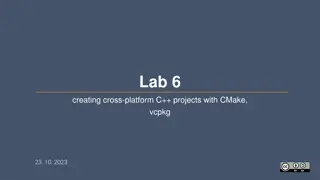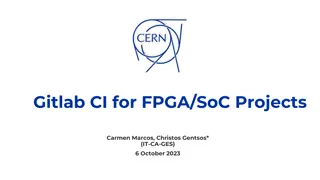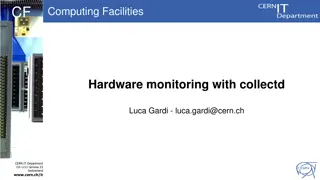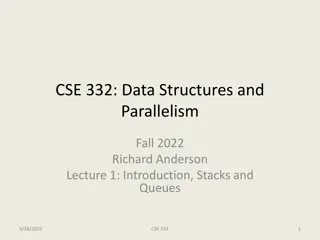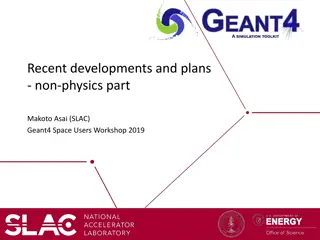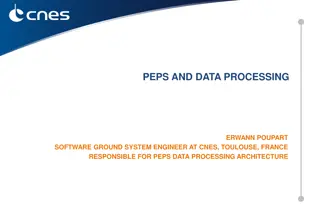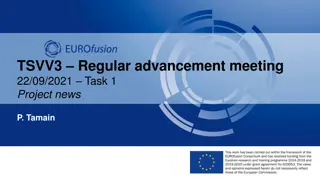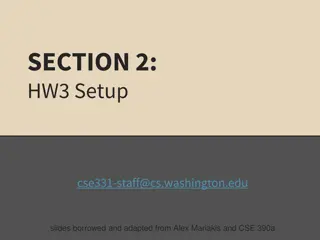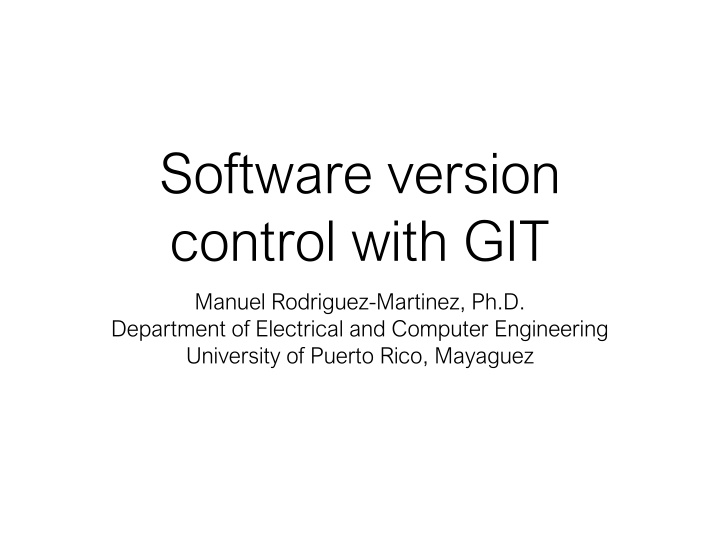
Introduction to Software Version Control with GIT by Manuel Rodriguez-Martinez, Ph.D.
Explore the concepts of software version control, learn how to manage repositories using GIT, and discover Git and Eclipse integration for seamless project development. Understand the importance of version control in managing code changes across different computers efficiently.
Download Presentation

Please find below an Image/Link to download the presentation.
The content on the website is provided AS IS for your information and personal use only. It may not be sold, licensed, or shared on other websites without obtaining consent from the author. If you encounter any issues during the download, it is possible that the publisher has removed the file from their server.
You are allowed to download the files provided on this website for personal or commercial use, subject to the condition that they are used lawfully. All files are the property of their respective owners.
The content on the website is provided AS IS for your information and personal use only. It may not be sold, licensed, or shared on other websites without obtaining consent from the author.
E N D
Presentation Transcript
Software version control with GIT Manuel Rodriguez-Martinez, Ph.D. Department of Electrical and Computer Engineering University of Puerto Rico, Mayaguez
Objectives Introduce the concept of software version control Show how to manage software repositories using GIT Show how to use Git and Eclipse in your projects
Tools to be used Git - distributed version control system GitLab - web app for Git repository management Open source equivalent to Github Eclipse - IDE for software development
Version control The issue: software is often developed by one person, using different computers a team, using different computers The problem: how to sync all these versions Emailing zip with software is not good
Git Git - software tool for version control Developed by Linus Torvalds to manage Linux kernel code Key idea: Distributed repositories - each repo is a full-fledged repository (peer-to-peer) Developers can add files, remove files, update files, merge files commit changes, push changes to other repos, pull changes from other repos,
Git Architecture Remote repo is usually online 24/7 on the Internet Ex. Github Any Repo can exchange files
Git concepts Local repo - the local repository on the machine that has the version of the code Staging area (index) - all the code files that are to be added to the local repo (not yet committed) think of it as the working directory with changes saved but not committed to the repo Local repo and staging area are in your local machine Remote repo - repository located in another machine, typically used as backup/distribution site Ex. github.com
Git concepts (2) Local Machine
Git Concepts (3) Clone project - get a copy from repo A into repo B, you can modify stuff from A In github, you can contribute (push) back from cloned project you own Fork project - get a copy from A into repo B. You cannot modify stuff from A. You have to ask the owner to merge your changes It github, you fork repo you want to use. It you want to contribute, then you send pull request for merging code
Operational modes Basic system Git runs from command line GitLab/Github provide a web based approach to manage repo (do git commands underneath) third-party clients provide UI for git commands Eclipse and other IDEs have UI for git commands We shall focus on GitLab and Eclipse, since we shall use them for the project
GitLab Access site with username and password Password must be changed on 1st login
GitLab Console Console show activity on repo, projects, settings
Actions from the Console Create projects View files Add files View commit messages Handle pull request for merge etc
Next Steps Watch video with process to create local and remote repos using GitLab and Eclipse

